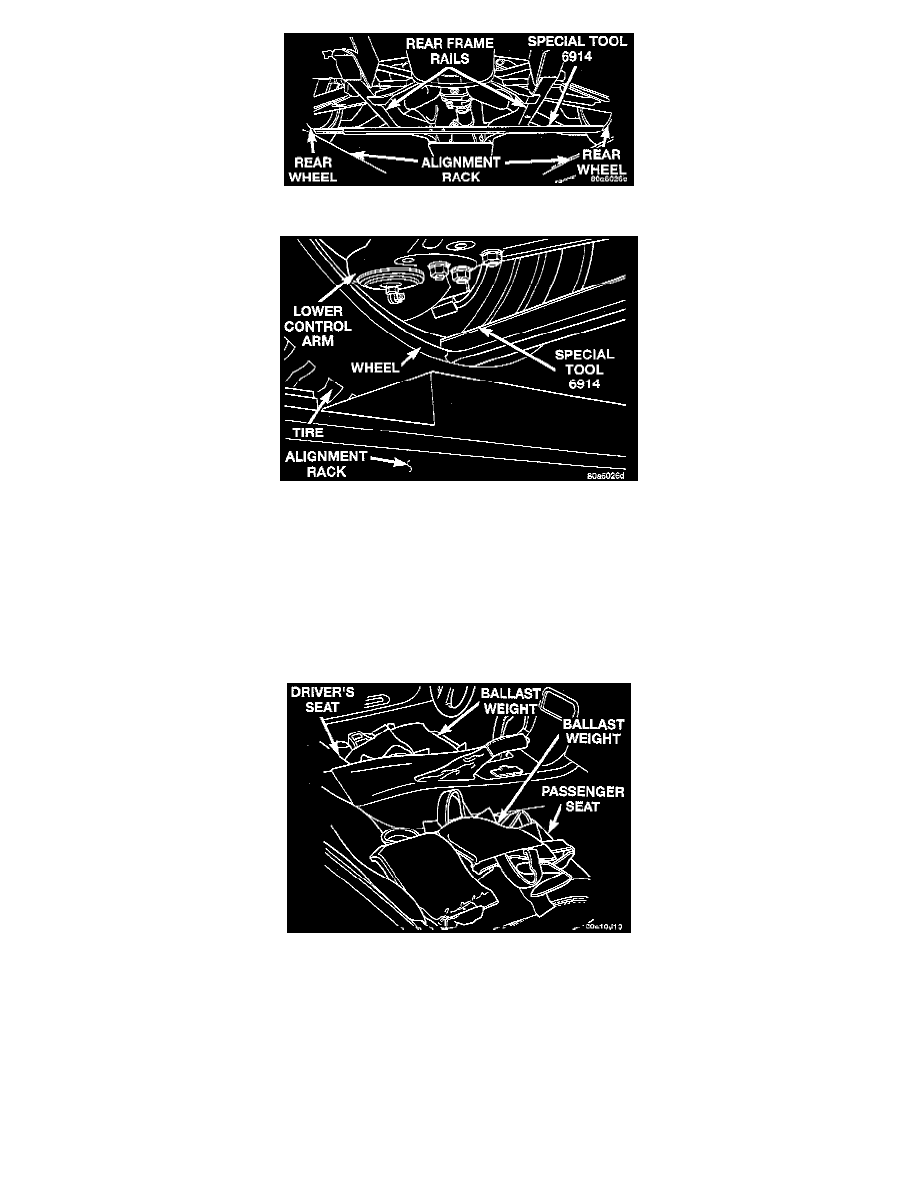Viper GTS V10-488 8.0L (1998)

5. Position the Rear Height Checking Fixture, Special Tool 6914, or equivalent on the inner flanges of the rear rims.
6. Ensure that the Vehicle Height Checking Fixtures, Special Tool 6914, or equivalent are correctly attached to the inner flange of the front and rear
wheels.
NOTE: When lowering the vehicle to its specified design height do not add all the ballast (weight) to the trunk and passenger compartment of
vehicle at one time. Add the ballast to the vehicle slowly until the correct distance between the Vehicle Height Checking Fixtures Special Tool
6914, and the frame of the vehicle is achieved.
NOTE: The approximate total weight needed to lower the vehicle to its design height is 400 pounds. The weight distribution in the vehicle is
approximately 330 in the passenger compartment (165 pounds per seat) and 70 pounds in the trunk. If the spare tire is not in the trunk,
approximately 40 additional pounds will need to be placed in the trunk to compensate for the tire.
7. Add ballast weight as required to the passenger compartment of the vehicle to lower the front of the vehicle to the specified design height. Do not
over ballast the vehicle, if vehicle is over ballasted the design height will be incorrect and the special tool can be bent.
